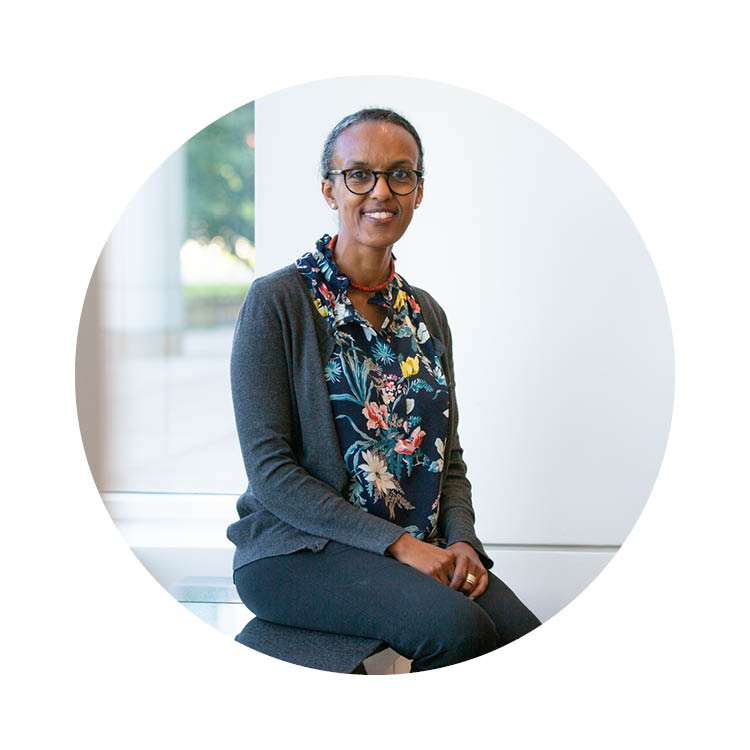Climate & Health
- Climate and Health Home
- About Us
- Climate and Health in Minnesota
- Agriculture and Food Security
- Air Quality
- Diseases Spread by Ticks and Mosquitoes
- Extreme Heat
- Planning for and Responding to Extreme Heat
- Water Changes
- Wellbeing
Resources
- Discussing Climate Change with Patients
- Minnesota Outdoor Air Quality Guidance for Schools and Child Care
- Climate and Health Stories
- Planning Tools and Publications
- Trainings and Resources
Related Topics
Environmental Health Division
Climate and Health Stories: Blain Mamo
Meet Blain Mamo.

Blain is a refugee health coordinator with the MDH Refugee and International Health Program. She works with local health departments, health care providers, and community organizations to promote the health and well-being of refugees in Minnesota.
What most excites you about your work?
Blain: I get excited when we can translate or use our data to develop programs that have a potential to improve the lives of new Americans. It’s even more exciting when we can collaboratively develop programs with our refugee and immigrant community partners.
How is your program preparing for and/or responding to climate changes in Minnesota?
Blain: We’re well-positioned to communicate the impact of climate change on health with the refugee and immigrant communities in a meaningful way; we believe that it’s important to engage early and often with all our communities in Minnesota. In July, we shared messages on extreme heat and health, appropriately, in our Refugee International Health Quarterly Newsletter; and, our hope for the future is to highlight MDH’s strategies and relevant climate change messages via media outlets that serve refugees and immigrants — ideally using visuals and accessible language.
Why do you think it’s important for MDH to be working on this issue?
Blain: It’s evident that climate change has huge implications on health, both at the individual and community levels. Globally and locally, climate change affects the most vulnerable, those who are socio-economically disadvantaged; and, it’s important for our agency to lead the public health efforts to mitigate the health risks.
How has climate change impacted your life personally?
Blain: Personally, I make conscious choices to minimize my carbon footprint (i.e. I don’t own a car) and I’m generally healthy, but I do worry for my daughter and her generation’s future. I think we collectively have to rethink our entire way of life and our local/global economy if we want a viable planet.
How has integrating climate change into your work allowed you to collaborate with programs you normally wouldn’t?
Blain: While participating in the Minnesota Climate Change and Health Strategic Planning Team in 2015, we found there was an opportunity for our Refugee and International Health Program to partner with community partners and the MDH Climate & Health Program to share information about the negative impacts of climate change on our personal and communities’ health. These same community members may have come from areas of the world dealing with immediate, life-changing impacts of climate change (i.e. droughts, displacements, scarcity of water and resources), so there is opportunity to learn from new Americans to mitigate the health impact.
What do you think are the biggest opportunities for climate and health moving forward?
Blain: Explaining climate change using data is complex. We have to find ways to integrate concrete examples to demonstrate the impact of the changing climate on our personal and communities’ health in practical terms, whether we are talking about the impact of extreme weather events or the protection of our water supply.